Here are some quick tips on how I care for my Chinese Money Plant:
- Give your Pilea Peperomioides Chinese Money plant bright, indirect sunlight. Avoid direct sun exposure.
- Water it when the soil soil feels dry to touch. Overwatering can lead to root rot.
- Requires well-draining potting mix with good aeration.
- Requires an average room temperature of 18-24°C.
- Feed your pilea plant monthly during the growing season (spring to summer).
- You can easily propagate through offsets or stem cuttings.
The Chinese Money Plant, scientifically known as Pilea peperomioides, is celebrated for its low-maintenance nature and its reputation for attracting luck. This plant is perfect for indoor environments, earning nicknames such as ‘pass-it-on-plant’, ‘Pancake plant’, and ‘UFO plant’ due to its unique appearance. Originating from Southern China, it has gained immense popularity worldwide thanks to its ease of care and propagation. The Chinese Money Plant’s round, coin-like leaves make it a charming addition to any home, and its history as a plant shared among friends and family enhances its sentimental value.
These plants were traditionally given as gifts in China, symbolizing good fortune and prosperity. Their journey to the West is an interesting one; in the 1940s, a Norwegian missionary brought Pilea peperomioides to Europe, where it quickly became a favorite among plant enthusiasts.This is also how I got my 1st Pilea from the US through my cousin who was travelling back to India. Today, they are widely cherished not only for their aesthetic appeal but also for their easy-going nature, making them ideal for both new and seasoned gardeners.
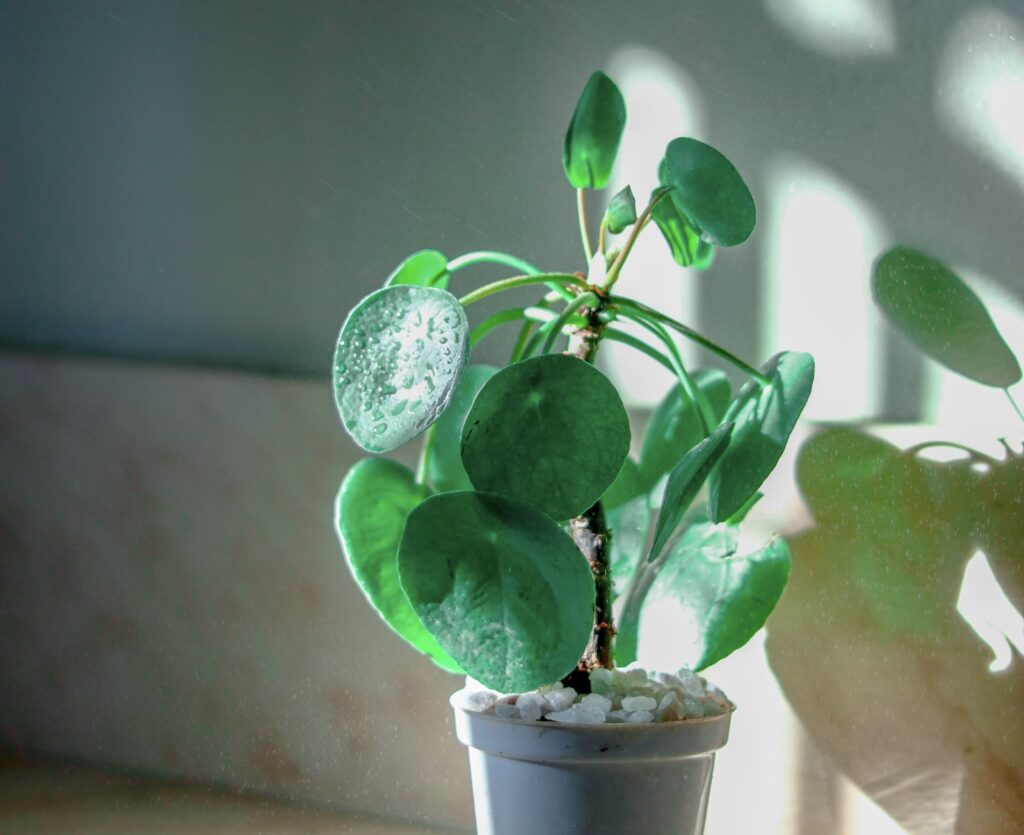
Are Chinese Money Plants Easy to Care for?
Chinese Money Plants are indeed easy to care for, making them an excellent choice for both novice and experienced gardeners. They exhibit several key characteristics that contribute to their low-effort upkeep:
- Resilience: Pilea plants are hardy and can tolerate a range of indoor conditions. They are adaptable and can thrive in different environments, as long as their basic needs are met.
- Low-maintenance: These plants do not require frequent watering or complicated care routines. They are forgiving if you miss a watering, making them perfect for busy individuals like me or those new to plant care.
- Self-propagating Abilities: Pilea plants naturally produce offshoots, allowing for easy propagation and the joy of sharing new plants with others. These baby plants, often called “pups,” can be separated from the mother plant and potted on their own, perpetuating the cycle of growth and sharing.
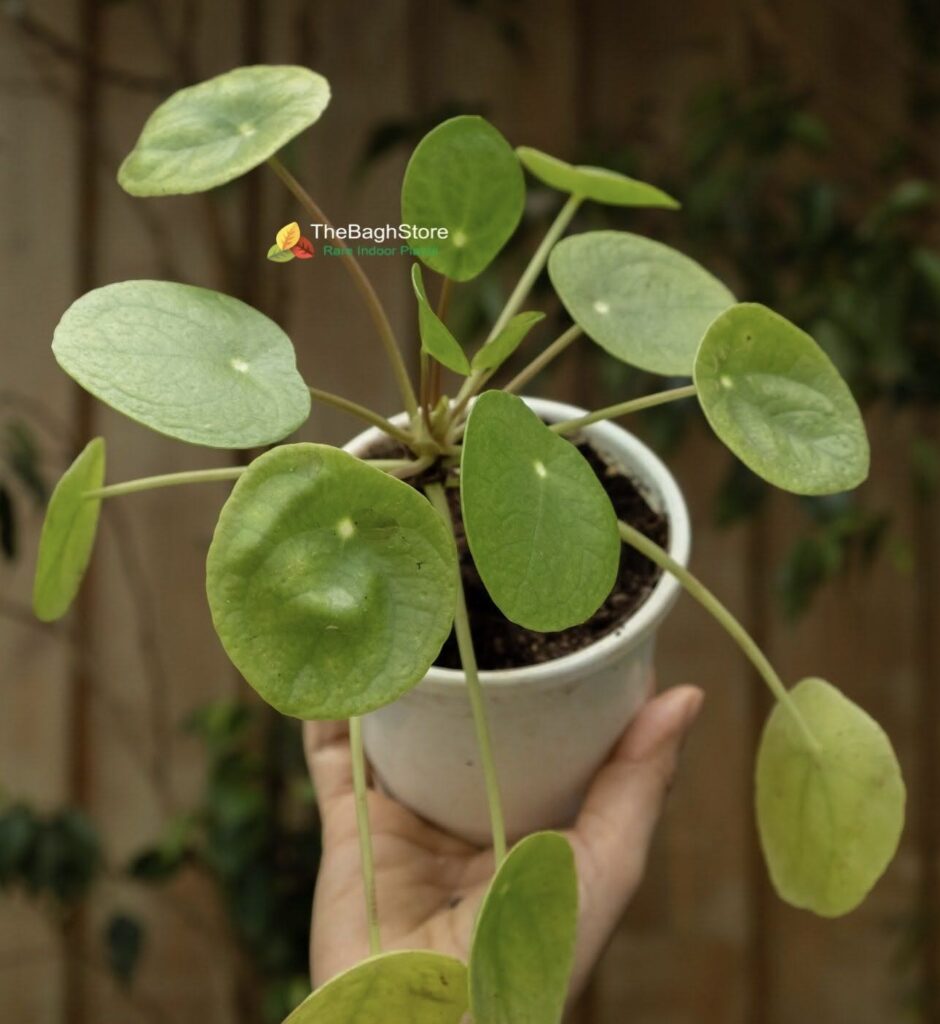
How Much Water Does a Pilea Peperomioides Chinese Money Plant Need?
Chinese Money Plants require moderate watering. Water your pilea plant moderately, ensuring the soil is allowed to dry out between watering’s. In the summer, Pilea plants may need more frequent watering due to higher evaporation rates. Typically, this might mean watering once a week. I water mine once a week during the summers. In the winter, reduce the watering frequency to every two weeks or so, as the plant’s growth slows down and it requires less moisture. I water very moderately once in 2 weeks during the winters..
I stick my finger into the dirt to check the soil. I also use a bamboo skewer to check the soil for watering. If the stick comes out dry, its time to water. If the stick comes out slightly moist then I wait a couple of days more before watering. I also check to see if the pot is heavy from the previous watering.
Watering is infact one of the most crucial aspects of any indoor plant. And for pilea peperomioides overwatering will lead to immediate root rot. I have killed mine by overwatering just once and letting it sit in soggy soil for long not just at home but as well as at the nursery.
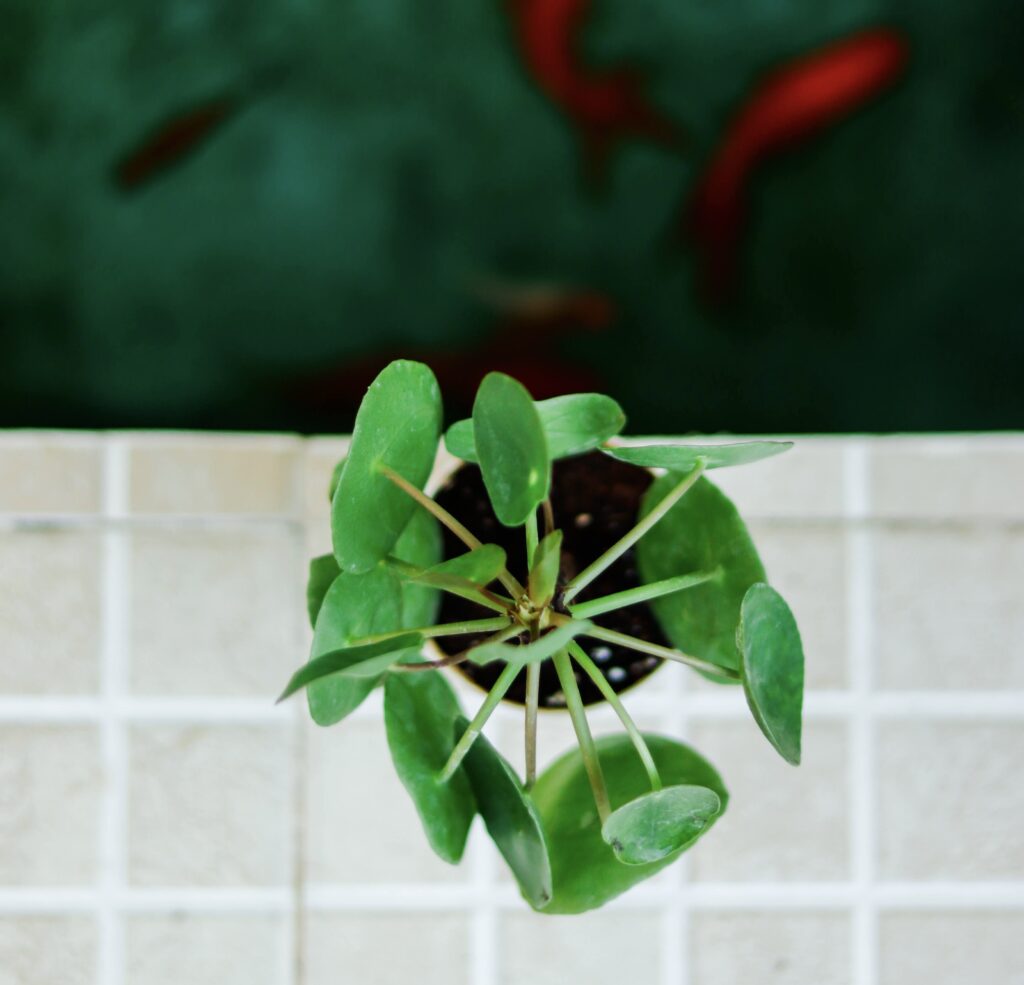
How Much Sunlight Do Pilea Peperomioides Plants Need?
Pilea Peperomioides Chinese Money thrive in bright, indirect sunlight. Place them near windows with filtered light. They enjoy plenty of light but not direct sunlight, which can be too intense.
Direct sunlight can scorch the leaves, leading to unsightly brown spots. If the plant is exposed to too much direct sun, consider using a sheer curtain to diffuse the light.
At home , I keep my Pilea in my north facing balcony that receives a ton of indirect bright light and is enjoying the summer air. Whereas at the store , I keep it at the west facing window that receives lots bright indirect light.
A thing about the Chinese money plant that you need to keep in mind is that it reaches for the light and therefore leans towards it. Hence, I keep rotating my pileas very often to ensure their stem grows straight.
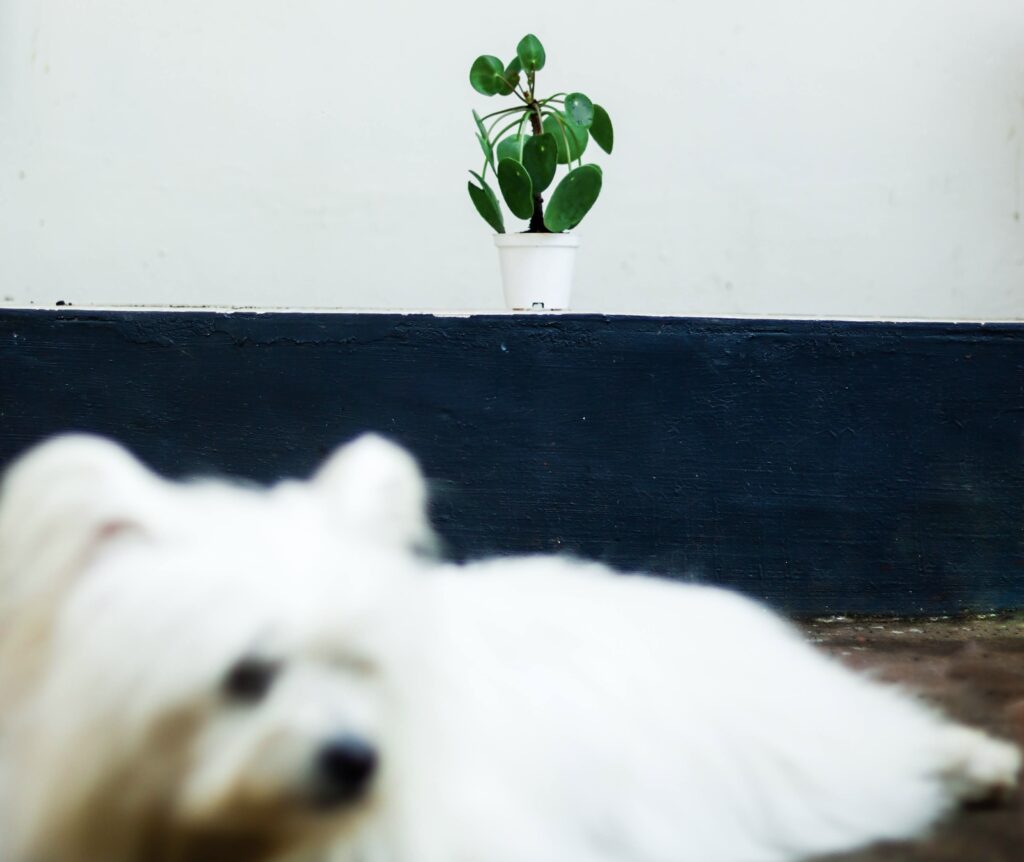
When to Fertilize the Chinese Money Plants?
Fertilize the chinese money plants once a month during the growing season (spring and summer). During the spring and winter, when the plant’s growth slows down, you can reduce or stop fertilizing.
Use a balanced, water-soluble fertilizer to provide essential nutrients. Look for a fertilizer with equal parts nitrogen, phosphorus, and potassium (NPK 10-10-10 or NPK 19-19-19). The instructions for using the fertilizer are always written on the packet.
Over-fertilizing can harm the plant, so stick to the recommended dosage or lower to promote healthy growth without overwhelming the plant. Signs of over-fertilization include leaf burn and yellowing.
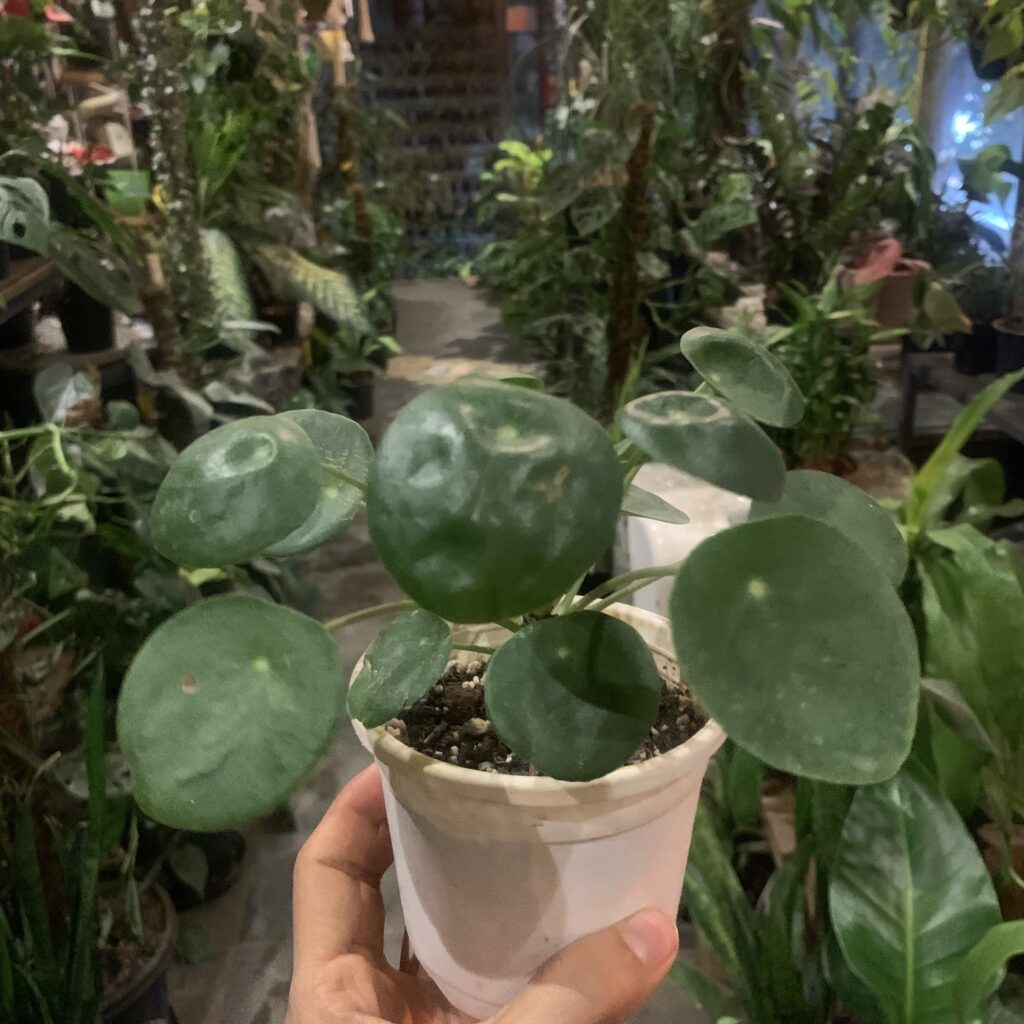
What’s the Best Temperature for My Chinese Money Plant?
Chinese Money Plants prefer a temperature range between 15-35°C. They can tolerate slightly higher temperatures, but it’s best to avoid extremes.
They are sensitive to cold drafts, so keep them away from open windows and doors during the colder months. Sudden temperature changes can stress the plant and lead to leaf drop. Since the temperature in my area doesn’t go below 12°C , I always keep my Pilea plant in my north facing balconies.
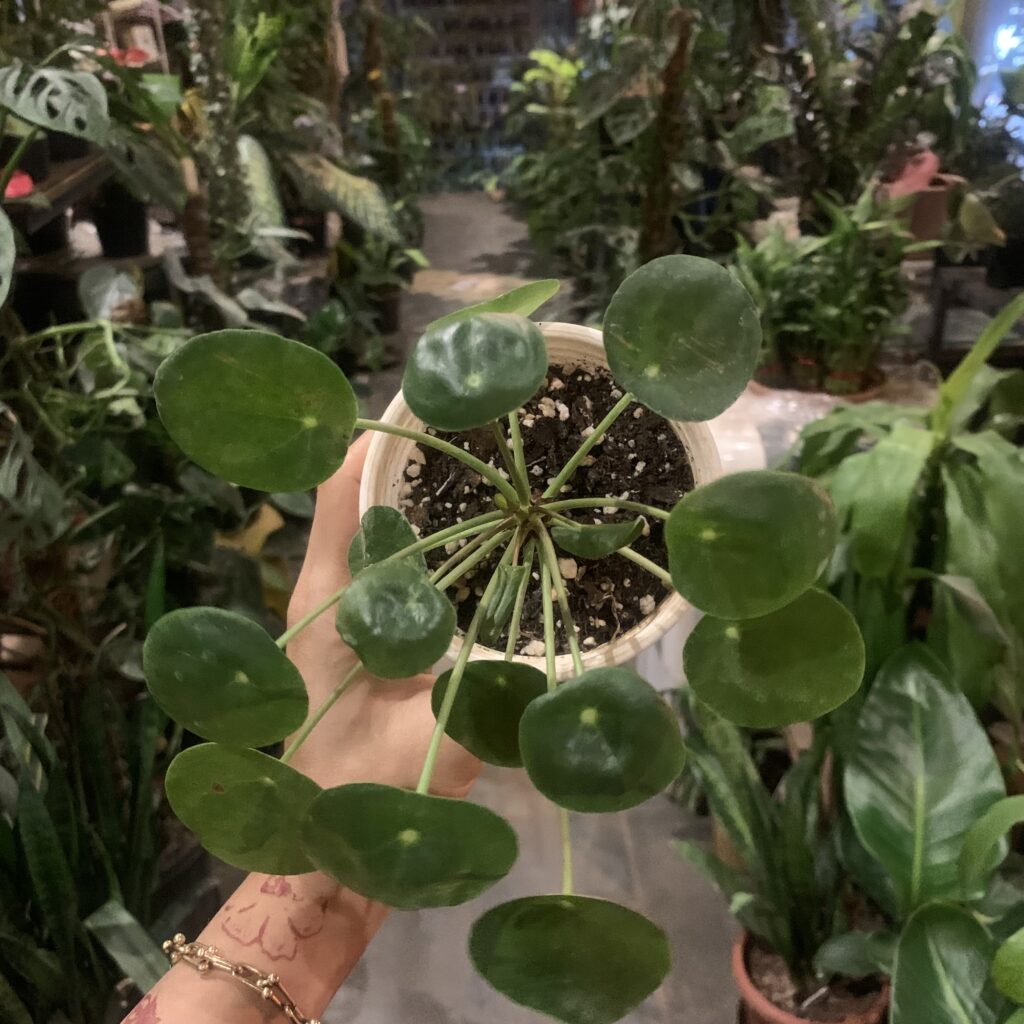
What Pots are best for My Chinese Money Plant
Proper drainage is crucial to prevent water from accumulating at the bottom of the pot, which can lead to root rot. Always opt for pots with multiple drainage holes to ensure excess water can escape.
I usually keep my chinese coin plant in a terracotta pot since terracotta pots are porous, allowing for better moisture regulation and prevents root rot by drying out faster. They also help to keep the roots cool and aerated. However, at the nursery we have all the chinese money plants in plastic nursery pots. Always make sure your plastic pot or ceramic pots have drainage holes.
If you have a decorative pot, you can keep your Pilea peperomioides with the existing nursery pot/ terracotta pot into the decorative pot. When it’s time for watering, I simply remove it from the decorative pot , let it drain out completely before sticking it back into the decorative pot.
Should I Repot My Chinese Money Plant?
Repot your Chinese money plant every 2-3 years or when you see signs of root bound so as to refresh the soil and provide more space for growth. Use a well-draining potting mix and a slightly larger pot to accommodate the plant’s expanding root system. When repotting, gently loosen the roots and remove any old soil to help the plant adjust to its new environment.
Signs that your plant needs repotting include roots growing out of the drainage holes or the plant appearing top-heavy and unstable.
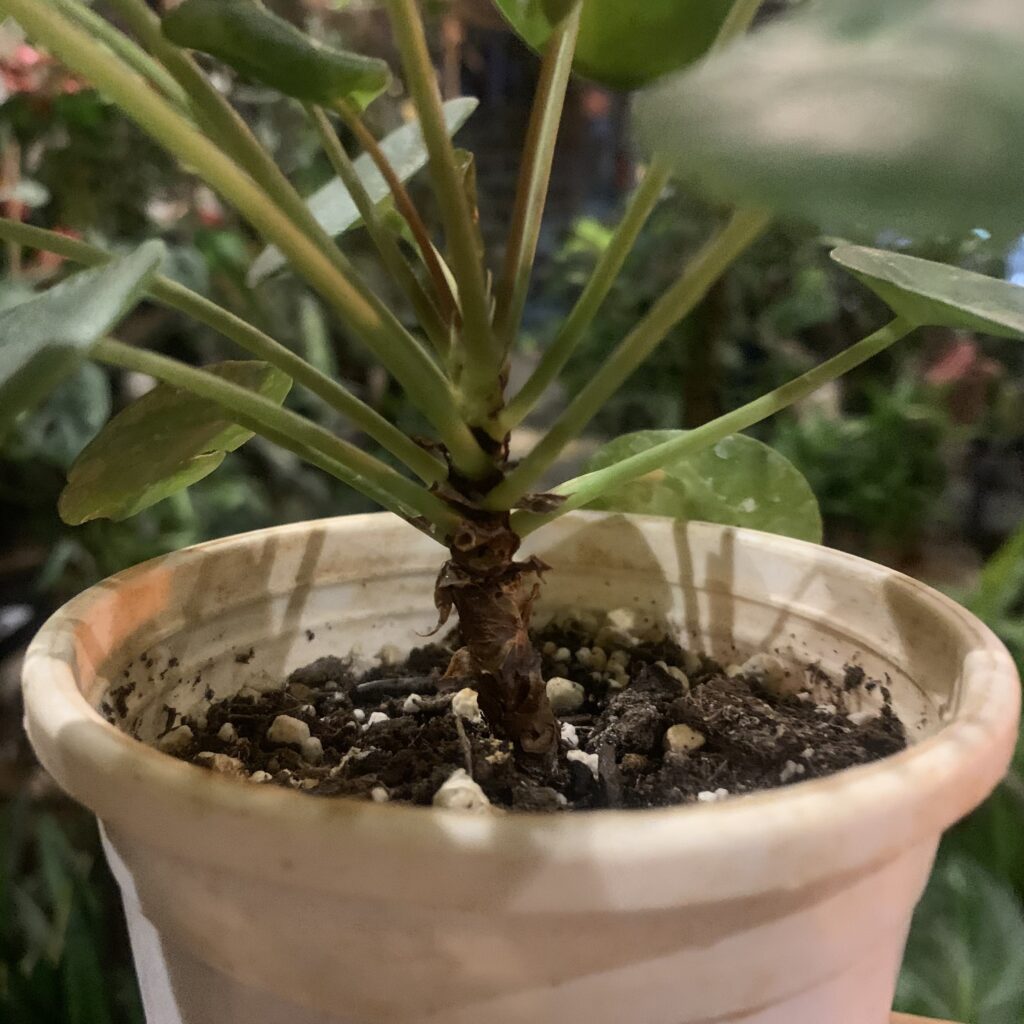
What soil is best for My Pilea Peperomioides?
For my Pilea peperomioides , I use a soil mix consisting of coco peat ,perlite, sand and leaf compost. I sometimes cut down on the peat since I want my soil mix for Pilea to be a well draining and aerated mix. I also add in a layer of Leca at the bottom of the pot to prevent root rot when overwatered.
Does My Chinese Money Plant Need Any Extra Love?
While Chinese Money Plants are low-maintenance, a little extra care can go a long way in keeping them thriving:
- Managing Plant Growth to Prevent Legginess: Regularly rotate the plant and pinch back the stems to encourage bushier growth. If the plant becomes too leggy, consider pruning it back to promote a fuller shape.
- Benefits of Spritzing with a Mister: Spritzing the leaves with a mister can help maintain humidity and keep the foliage clean. This is especially beneficial in dry indoor environments. Mist the plant in the morning to allow the leaves to dry before evening.
- Dusting Leaves to Improve Light Absorption: Gently dust the leaves with a soft cloth to remove any accumulated dust, ensuring the plant can absorb light effectively. Clean leaves not only look better but also function more efficiently in photosynthesis.
Common Problems and Solutions
Even with the best care, your Pilea peperomioides might face some common issues:
- Yellowing Leaves: This can be a sign of overwatering or nutrient deficiency. Check your watering schedule and ensure you are fertilizing appropriately.
- Drooping Leaves: Often a result of underwatering or exposure to cold drafts. Adjust your watering routine and move the plant to a more stable environment.
- Curling Leaves:
- Pests: Occasionally, Pilea plants can attract pests like spider mites or aphids. Regularly inspect your plant and use insecticidal soap or neem oil if necessary.
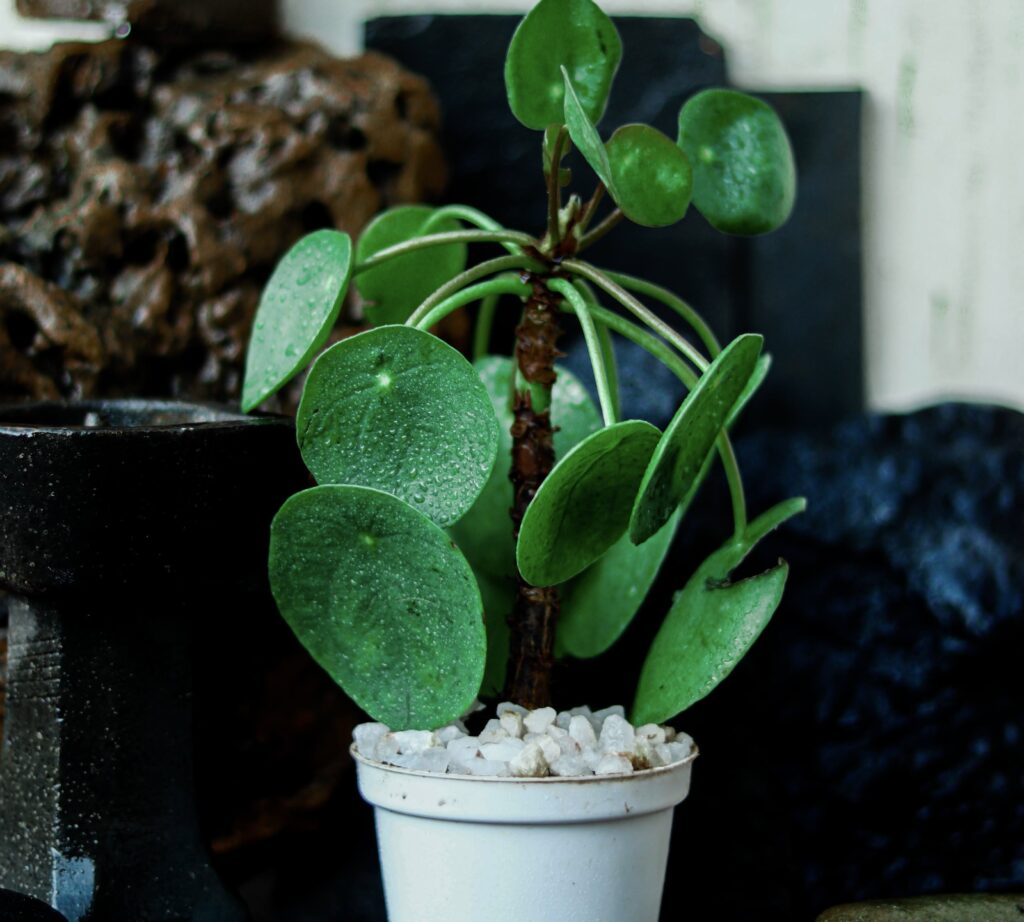
How to Propagate My Chinese Money Plant?
One of the joys of owning a Chinese Money Plant is its ease of propagation. They produce a ton of baby plants often called ans offshoots, or “pups,” that grow at the base of the plant. These can be separated and potted on their own.
Gently remove the pup from the mother plant, ensuring it has its own root system. Plant it in a small pot with well-draining soil and care for it as you would a mature Pilea.
Place the newly potted pups in bright, indirect light and keep the soil slightly moist until they establish themselves.

